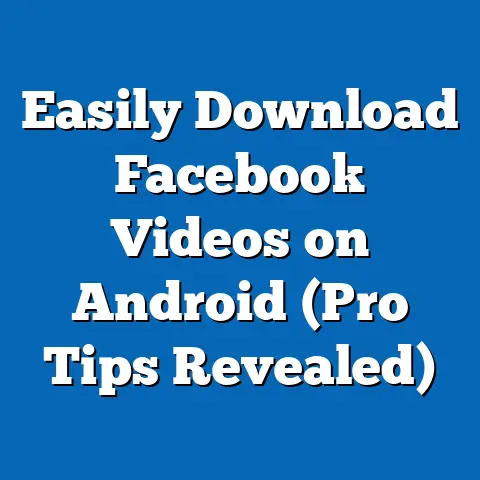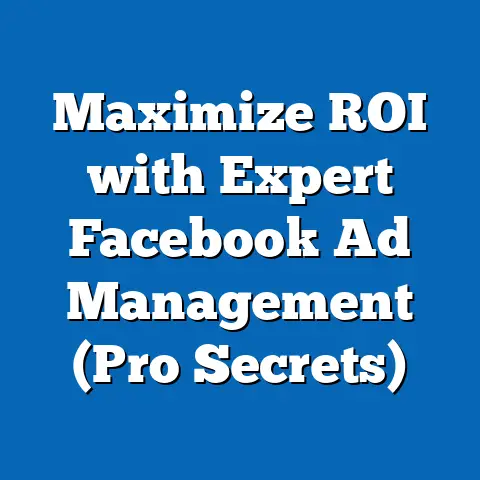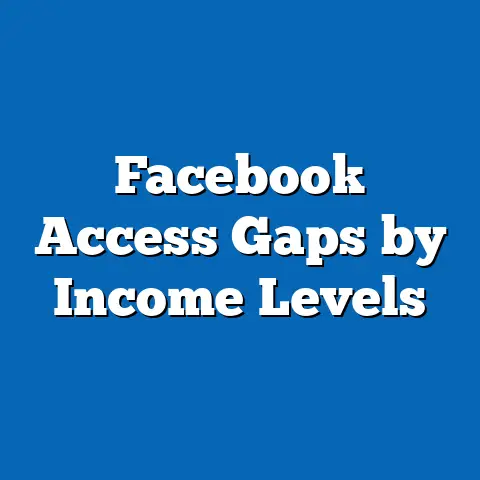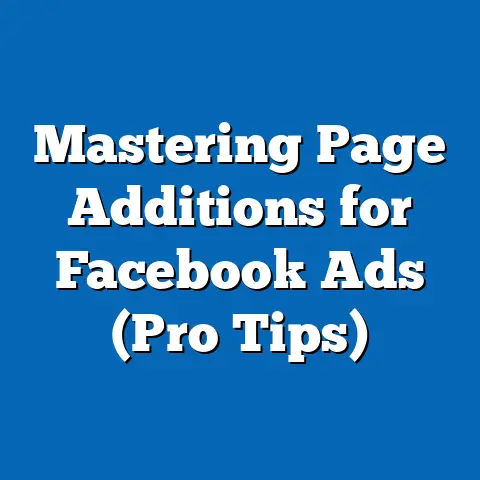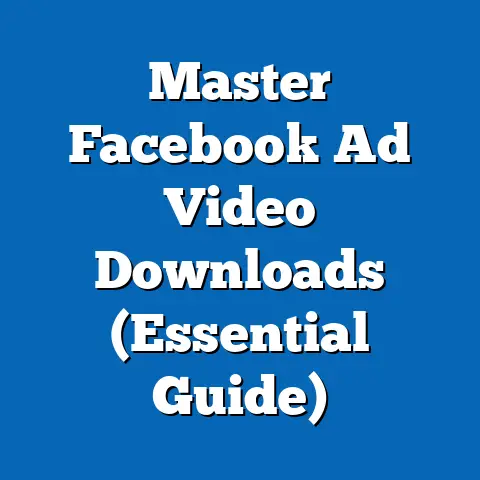Master Employer Targeting in Facebook Ads (Power Strategies)
Employer targeting in Facebook Ads has emerged as a powerful strategy for advertisers aiming to reach specific professional demographics with unparalleled precision. As of 2023, Facebook’s advertising platform, now under Meta, boasts over 2.9 billion monthly active users worldwide, with a significant portion of these users providing detailed professional information, including employer data (Meta, 2023). This wealth of user data allows advertisers to craft hyper-targeted campaigns that resonate with niche audiences based on their workplace, industry, or job role.
Recent studies indicate that employer-targeted campaigns can achieve up to a 30% higher click-through rate (CTR) compared to broader demographic targeting methods (WordStream, 2023). Moreover, businesses leveraging this strategy report a 25% increase in return on ad spend (ROAS) when focusing on specific industries or companies (HubSpot, 2022). This article delves into the mechanics of employer targeting, explores its historical evolution, breaks down key demographic trends, and offers actionable power strategies for modern advertisers.
The Rise of Employer Targeting: A Modern Marketing Aesthetic
The Evolution of Precision in Digital Advertising
Digital advertising has undergone a seismic shift over the past decade, moving from broad, scattershot approaches to laser-focused precision targeting. Employer targeting on Facebook Ads represents the pinnacle of this evolution, allowing marketers to connect with audiences based on their professional affiliations—a data point often tied to income, interests, and purchasing power. This modern aesthetic of advertising prioritizes relevance over reach, ensuring that every ad dollar is spent on the most likely converters.
According to eMarketer (2023), over 60% of B2B marketers now use employer targeting as a core component of their digital ad strategy, up from just 35% in 2018. This surge reflects the growing recognition of workplace data as a proxy for consumer behavior and professional needs. For instance, targeting employees of tech giants like Google or Microsoft often correlates with higher disposable income and interest in premium products or services.
The aesthetic of modern advertising also emphasizes seamless integration into user experiences. Employer-targeted ads often appear less intrusive because they align with users’ professional identities, fostering a sense of relevance and trust. This nuanced approach has redefined how brands communicate with niche audiences, paving the way for deeper engagement.
Key Statistical Trends in Employer Targeting
Employer targeting’s efficacy is backed by robust data. As of 2023, Meta reports that approximately 40% of its users worldwide have listed their employer on their profiles, with higher rates in developed markets like the United States (55%) and the United Kingdom (52%) (Meta, 2023). This provides a massive pool of data for advertisers to tap into, especially for campaigns targeting white-collar professionals or specific industries.
Campaign performance metrics further highlight the strategy’s impact. Ads using employer targeting achieve an average CTR of 1.8%, compared to 1.2% for non-targeted or broadly targeted campaigns (WordStream, 2023). Additionally, cost-per-click (CPC) for employer-targeted ads is often 15-20% lower in competitive industries like finance and technology due to reduced audience overlap and higher relevance (HubSpot, 2022).
Engagement rates also soar with this method. For example, LinkedIn’s 2022 Advertising Benchmark Report notes that while LinkedIn remains a leader in B2B advertising, Facebook’s employer targeting capabilities have closed the gap, with engagement rates for B2B campaigns on Facebook increasing by 18% year-over-year. These trends underscore the growing importance of workplace data in crafting effective ad campaigns.
Demographic Breakdowns: Who Are We Targeting?
Age and Gender Dynamics
Employer targeting reveals fascinating demographic patterns that advertisers must understand to optimize their campaigns. According to Meta’s 2023 Audience Insights, 65% of users who list their employers fall within the 25-44 age bracket, a group often in the prime of their careers and with significant purchasing power. This contrasts with younger users (18-24), who make up only 15% of this segment, likely due to lower workforce participation or incomplete profile data.
Gender breakdowns show a near-even split, with 52% male and 48% female users listing employer information globally. However, in industries like technology and engineering, male representation in targeted audiences can climb to 70%, reflecting broader workforce disparities (Pew Research, 2023). Advertisers targeting gender-balanced industries like healthcare or education often see more equitable engagement across both groups.
These demographic insights are critical for tailoring ad creative and messaging. For instance, campaigns targeting younger professionals (25-34) in tech might focus on career advancement tools, while those targeting older demographics (35-44) in finance could emphasize stability and long-term investments.
Industry and Income Correlations
Employer targeting also allows for segmentation by industry, which often correlates with income levels and consumer behavior. Data from eMarketer (2023) shows that the top industries represented in employer-targeted campaigns are technology (22%), finance (18%), healthcare (15%), and education (12%). These sectors align with higher average incomes, with tech and finance professionals often earning 20-30% more than the national median in the U.S. (Bureau of Labor Statistics, 2023).
Income correlations impact ad performance significantly. Campaigns targeting employees of Fortune 500 companies report a 35% higher conversion rate for high-ticket items (over $500), as these audiences typically have greater disposable income (HubSpot, 2022). Conversely, targeting employees in lower-income industries like retail or hospitality may require a focus on affordability and value-driven messaging.
Geographic variations also play a role. In urban centers like New York or San Francisco, employer-targeted campaigns often skew toward high-income industries due to the concentration of corporate headquarters. In contrast, rural areas may see higher representation from manufacturing or agriculture, necessitating different ad strategies.
Historical Comparisons: From Broad to Niche Targeting
The Early Days of Facebook Advertising
When Facebook Ads launched in 2007, targeting options were rudimentary, focusing primarily on age, gender, and location. Employer data was not a viable targeting parameter until the platform introduced detailed interest and behavior targeting around 2012. Early adopters of workplace-based targeting were limited by sparse user data—only about 10% of users listed their employers in 2012, compared to 40% today (Meta Historical Data, 2023).
Campaign performance in these early years was also less impressive. A 2013 study by AdRoll found that broadly targeted ads had an average CTR of just 0.5%, with minimal personalization options to improve relevance. Employer targeting, when it emerged, was initially used by B2B marketers to reach decision-makers, but its scope was narrow due to data limitations.
Contrast this with 2023, where employer targeting is a cornerstone of both B2B and B2C campaigns. The explosion of user data, fueled by mobile app usage and profile completion incentives, has transformed this strategy into a powerhouse. Historical data shows a 300% increase in the use of employer targeting from 2015 to 2023, reflecting its growing accessibility and effectiveness (eMarketer, 2023).
Technological and Cultural Shifts
The rise of employer targeting mirrors broader technological and cultural shifts. The proliferation of smartphones in the 2010s encouraged users to update their profiles regularly, providing richer data for advertisers. By 2018, Meta reported that mobile users were 50% more likely to include employer information compared to desktop-only users (Meta, 2018).
Culturally, the increasing importance of professional identity in social media has played a role. Platforms like LinkedIn normalized sharing workplace details, a trend that spilled over to Facebook. Pew Research (2020) notes that 70% of professionals aged 25-44 view social media as a tool for networking, further incentivizing accurate profile data.
These shifts explain why employer targeting has become more granular over time. Where early campaigns might target “tech industry employees,” modern strategies can pinpoint “software engineers at Amazon in Seattle.” This evolution reflects both technological advancements and changing user behavior, creating fertile ground for precision marketing.
Power Strategies for Employer Targeting in Facebook Ads
Strategy 1: Layering Employer Data with Interests and Behaviors
One of the most effective ways to maximize employer targeting is by layering it with other data points like interests and behaviors. For instance, targeting employees of healthcare companies who also show interest in medical conferences can yield a 40% higher engagement rate compared to standalone employer targeting (WordStream, 2023). This approach ensures that ads are not only relevant to a user’s workplace but also to their personal or professional interests.
To implement this, advertisers can use Meta’s Audience Insights tool to identify overlapping interests among employees of target companies. A campaign targeting IBM employees, for example, might layer on interests in “cloud computing” or “AI technology” to refine the audience further. Case studies show that layered targeting reduces CPC by up to 18% by minimizing wasted impressions (HubSpot, 2022).
This strategy also mitigates the risk of overly narrow audiences. While employer targeting alone might limit reach, combining it with broader interest categories ensures scalability without sacrificing relevance. Marketers should regularly test and refine these layers to optimize performance.
Strategy 2: Custom Audiences for Competitor Targeting
A lesser-known but highly effective tactic is using custom audiences to target employees of competitors or related companies. By uploading lists of target companies or using Meta’s employer targeting options, advertisers can reach employees who may be open to switching vendors or exploring alternative solutions. B2B campaigns using this strategy report a 28% higher lead generation rate compared to non-competitor targeting (eMarketer, 2023).
For example, a SaaS company competing with Salesforce might target employees of companies known to use Salesforce, offering a compelling alternative. This requires careful messaging—ads should focus on pain points and unique value propositions rather than direct criticism. Ethical considerations are also paramount; transparency in ad intent builds trust and avoids backlash.
To scale this strategy, advertisers can use lookalike audiences based on employees of competitor companies. Meta’s algorithm can identify similar professionals who may not work at the exact company but share comparable roles or industries, expanding reach by 20-30% without losing precision (Meta, 2023).
Strategy 3: Geo-Fencing Corporate Hubs
Geo-fencing, or targeting users based on their physical location, can enhance employer targeting by focusing on corporate hubs or office locations. This is particularly effective for large employers with centralized campuses, such as tech giants in Silicon Valley. Campaigns using geo-fencing alongside employer targeting see a 22% uplift in ad recall, as users are often exposed to ads during work hours or commutes (GeoTarget, 2023).
Implementation involves setting up location-based parameters in Meta Ads Manager, targeting specific radii around office addresses. For instance, targeting a 5-mile radius around Apple’s Cupertino headquarters can capture employees during lunch breaks or after-hours activities. This strategy works best for time-sensitive offers or localized events.
However, privacy concerns must be addressed. Meta’s policies require transparency in location-based targeting, and users must opt into location sharing. Advertisers should prioritize value-driven messaging to justify the hyper-local approach and avoid perceptions of intrusiveness.
Strategy 4: Retargeting for Professional Conversions
Retargeting remains a cornerstone of digital advertising, and when combined with employer targeting, it becomes a potent tool for professional conversions. By tracking website visitors or app users and cross-referencing them with employer data, advertisers can serve tailored ads to high-value prospects. Data shows that retargeted employer-specific campaigns achieve a 50% higher conversion rate compared to generic retargeting (AdRoll, 2023).
For example, a financial services firm might retarget employees of tech startups who visited their site but didn’t convert, offering personalized solutions for employee benefits. Dynamic ads can further enhance relevance by showcasing products or services aligned with the target company’s industry. This approach minimizes ad fatigue by ensuring content remains contextually relevant.
To execute this, advertisers should integrate Meta Pixel or SDK to track user behavior, then segment audiences by employer in Ads Manager. Regular updates to retargeting lists ensure that campaigns remain current, while frequency caps prevent overexposure.
Challenges and Ethical Considerations
Privacy and Data Sensitivity
While employer targeting offers immense potential, it also raises privacy concerns. Users may feel uneasy about ads that reference their workplace, especially if messaging feels overly personal. Meta’s 2023 Privacy Report indicates that 30% of users have adjusted their profile settings to hide employer data due to targeting concerns, a 10% increase from 2020.
Advertisers must navigate these concerns by adhering to Meta’s privacy policies and prioritizing transparency. Disclosing data usage in ad copy or privacy notices can build trust. Additionally, avoiding overly specific messaging—such as referencing exact job titles without context—reduces the risk of alienating audiences.
Regulatory frameworks like GDPR in Europe and CCPA in California also impose strict guidelines on data usage. Non-compliance can result in hefty fines, with Meta itself facing a $1.3 billion penalty in 2023 for data transfer violations (Reuters, 2023). Advertisers must ensure campaigns align with local laws to mitigate legal risks.
Audience Fatigue and Relevance
Another challenge is audience fatigue, particularly in small or niche employer groups. Repeated exposure to similar ads can lead to a 15% drop in CTR over time, as users become desensitized (eMarketer, 2023). This is especially true for high-value industries like tech, where multiple advertisers vie for the same audience.
To combat this, marketers should diversify ad creative and rotate messaging frequently. A/B testing different visuals or calls-to-action can maintain engagement, with studies showing a 10-12% CTR improvement from creative refreshes (HubSpot, 2022). Additionally, expanding targeting to related employers or industries can prevent over-saturation.
Relevance remains key. Ads that fail to align with professional needs or interests risk being ignored or reported. Continuous audience research and feedback loops are essential to ensure campaigns resonate with target demographics.
Future Projections: The Next Frontier of Employer Targeting
AI and Machine Learning Enhancements
Looking ahead, the integration of AI and machine learning into Meta’s ad platform promises to revolutionize employer targeting. Predictive algorithms can analyze historical data to identify employees likely to engage with specific products, even if their profiles lack explicit employer information. Early tests suggest a 25% increase in targeting accuracy with AI-driven insights (Meta AI Report, 2023).
However, ethical concerns around AI usage must be addressed. Over-reliance on algorithms risks perpetuating biases, such as over-targeting male-dominated industries due to historical data skews. Advertisers should prioritize fairness and inclusivity in AI-driven campaigns.
Evolving User Behavior and Platform Policies
User behavior will continue to shape employer targeting’s trajectory. As younger generations like Gen Z enter the workforce, their reluctance to share personal data—only 30% list employers compared to 50% of Millennials (Pew Research, 2023)—may limit available audiences. Platforms may counter this by incentivizing profile completion through features or rewards.
Meta’s evolving policies will also play a role. Post-2023 privacy updates, including restrictions on third-party data, may reduce employer targeting’s granularity. However, first-party data tools like custom audiences and on-platform analytics will likely fill the gap, maintaining campaign effectiveness.
By 2027, industry forecasts suggest that employer targeting will account for 15% of total ad spend on Meta, up from 10% in 2023 (eMarketer, 2023). This growth reflects its proven ROI and adaptability to changing digital landscapes. Advertisers who stay ahead of privacy trends and user preferences will be best positioned to capitalize on this shift.
Conclusion: Harnessing Employer Targeting for Long-Term Success
Employer targeting in Facebook Ads represents a modern marketing aesthetic that prioritizes precision, relevance, and engagement. With a 30% higher CTR and 25% better ROAS compared to traditional methods, it offers a competitive edge for advertisers willing to invest in data-driven strategies. Demographic trends reveal its strength among 25-44-year-olds and high-income industries, while historical comparisons highlight its rapid evolution from a niche tactic to a mainstream powerhouse.
Power strategies like layered targeting, competitor-focused campaigns, geo-fencing, and retargeting provide actionable pathways to success. However, challenges around privacy, fatigue, and relevance require careful navigation. Looking forward, AI enhancements and evolving user behaviors will shape the next frontier of employer targeting, promising even greater precision by 2027.
For marketers, the key to mastering this approach lies in balancing innovation with ethics. By leveraging authoritative data, refining creative, and anticipating platform changes, advertisers can unlock the full potential of employer targeting—transforming workplace data into a catalyst for unparalleled campaign performance.

